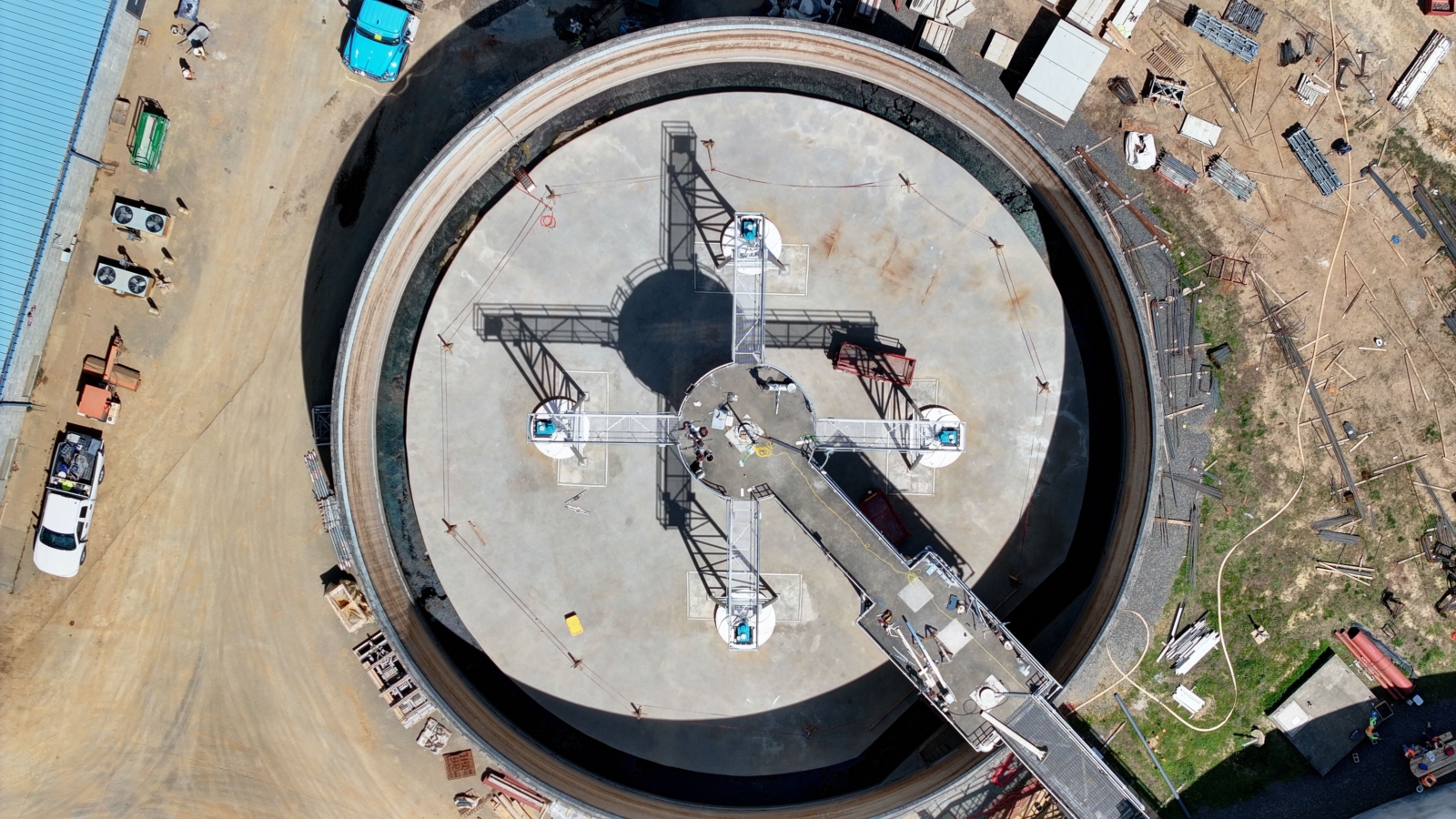Charlotte Water’s Stowe Regional Water Resource Recovery Facility (Stowe RWRRF) will “treat water from across a fast-growing region of nearly 3 million people by partnering with neighboring towns and delivering a project that can be readily expanded,” according to an article in the April 2025 issue of Engineering-News Record Texas & Southeast.
Charlotte Water has teamed up with the Cities of Belmont and Mount Holly to construct a vast, new, state-of-the-art wastewater treatment facility in northwest Mecklenburg County to serve a burgeoning population. The two other cities will in turn close their individual wastewater treatment facilities and become a single customer of Charlotte Water, which will take and treat their discharges at Stowe RWRRF.
This article explores how Stowe RWRRF, Charlotte Water’s first new construction project in nearly 40 years, is being built by a group of contractor partners. Here are a few highlights of the various companies’ roles in bringing Stowe RWRRF to life:
- HDR, the owner’s adviser for the overall effort, served as engineer for the Stowe access project that included a $16-million access road and bridge built on site in early 2024.
- Blythe Development constructed the mile-long access road and bridge over Long Creek.
- CDM Smith designed and PC Construction is building the $42-million Stowe solids handling project, which includes solids holding facilities and dual 10-inch force mains, all set to finish in the first half of 2027.
- GHD is designing a $76-million project that includes a pump station at the Belmont facility, dual 30-inch force mains underneath the Catawba River and a 24-in. force main from there to Charlotte Water’s Paw Creek Pump Station. All of these elements have a completion target of the third quarter of 2028.
- Haskell partnered with Black & Veatch on the design and construction of upgrades to the Long Creek Pump Station, the Stowe Headworks and Influent Pump Station, as well as the Mount Holly Lift Station and Force Main.
- The $301-million Stowe RWRRF is being built by a Crowder Construction-Garney Construction joint venture and is the heart of the project, accounting for nearly half of the total project cost. It is set to be completed by the end of 2027.
Once operational, Stowe RWRRF will connect to and collect wastewater from new pump stations in the cities of Mount Holly and Belmont on the other side of the Catawba River. Each of Belmont and Mount Holly’s existing facilities will be decommissioned once Stowe comes online.
But in order to pull water flows from Mount Holly Pump Station to Stowe RWRRF, a process known as Horizontal Directional Drilling (HDD) needed to be used to install wastewater pipelines roughly 65-75 feet under the Catawba River and Long Creek. The installed pipes are located deep in the bedrock below the Catawba River from Mount Holly Pump Station to the Long Creek Pump Station and under Long Creek from Stowe Headworks to the new Stowe RWRRF. The HDD process involved drilling a tunnel through the underground bedrock to form a pathway that the pipeline was then pulled through. A similar plan for the Belmont Pump Station, still in design, will use two 30-inch wastewater pipelines connecting to a separate lift station before sewage is pumped to Stowe RWRRF.
The informative article also shares details of the Stowe RWRRF’s two-story LEED-certified administration building that will include features the public can use. But that’s just the tip of the iceberg when it comes to the project’s green efforts. Using the latest water treatment technology, Stowe RWRRF will achieve near drinking quality levels for the water that is flowed back into the Catawba River, as being a good steward of the environment is a key priority for this project.
To better serve the public, Stowe RWRRF will include a Community Benefit Project featuring 90 acres of preserved land that incorporates an educational walking trail, plans for future trail construction with Catawba Lands Conservancy and a multi-use path along a new access road and bridge to serve as an invitation for the public to come out and enjoy time in this welcoming green space.
Yet, at the core of everything, fostering strong contractor relationships remains deeply important to Stowe RWRRF’s success. We could not be more appreciative of and amazed by all the hard work of our partners! We hope you find this article to be an educational glance behind the scenes of the design, engineering and construction might it takes to keep up to speed with a growing city’s wastewater needs!


Very good https://is.gd/tpjNyL
Very good https://is.gd/tpjNyL